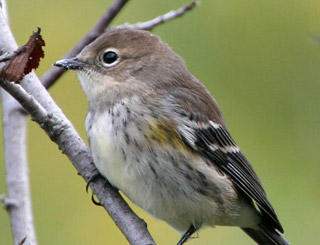Birds in Focus- Fall Migration
by Chris Showalter
Fall is a wonderful time of year in the eastern deciduous forests. The leaves change color, outside temperatures are moderate and for many of us it is time to put away the shorts and t-shirts and break out our favorite “cords” and sweaters. Many people will travel great distances to take in fall festivals and the dramatic leaf color change. But there is one fall event that you can appreciate, most likely, from your own backyard – bird fall migration. Literally, billions of birds will leave their breeding grounds in the north and begin the journey to their wintering grounds in the south.
Bird migration is a wonder of nature, one that is still not fully understood. In fact, migration is often viewed as the seasonal movement of birds during spring and fall to avoid harsh weather. That view is not completely correct. Migration most likely evolved as a way for birds to exploit resources, such as insects, that are seasonally abundant and avoid times and places where resources are scarce. Most birds are well equipped to handle cold temperatures (feathers are one of natures best insulators), but when there is no food birds must migrate.
For bird watchers the fall season is a fun and challenging time simply because the birds can be quite difficult to identify. The males no longer have their brilliant breeding plumage and have instead molted into a less distinguishable, less colorful fall plumage. Many males can be nearly indistinguishable from females in the fall. In addition, it can be quite difficult to tell one species from another as is the case with wood warblers in fall plumage (pictured below).
 Female Yellow-rumped Warbler in fall plumage |
 Blackpoll Warbler in fall plumage |
References
Kerlinger, Paul. How birds Migrate. Mechanicsburg, PA: Stackpole Books. 1995
Click here for the "Birds in Focus" archive
Images obtained from the USFWS National Image Library. They have been released to the public domain.
